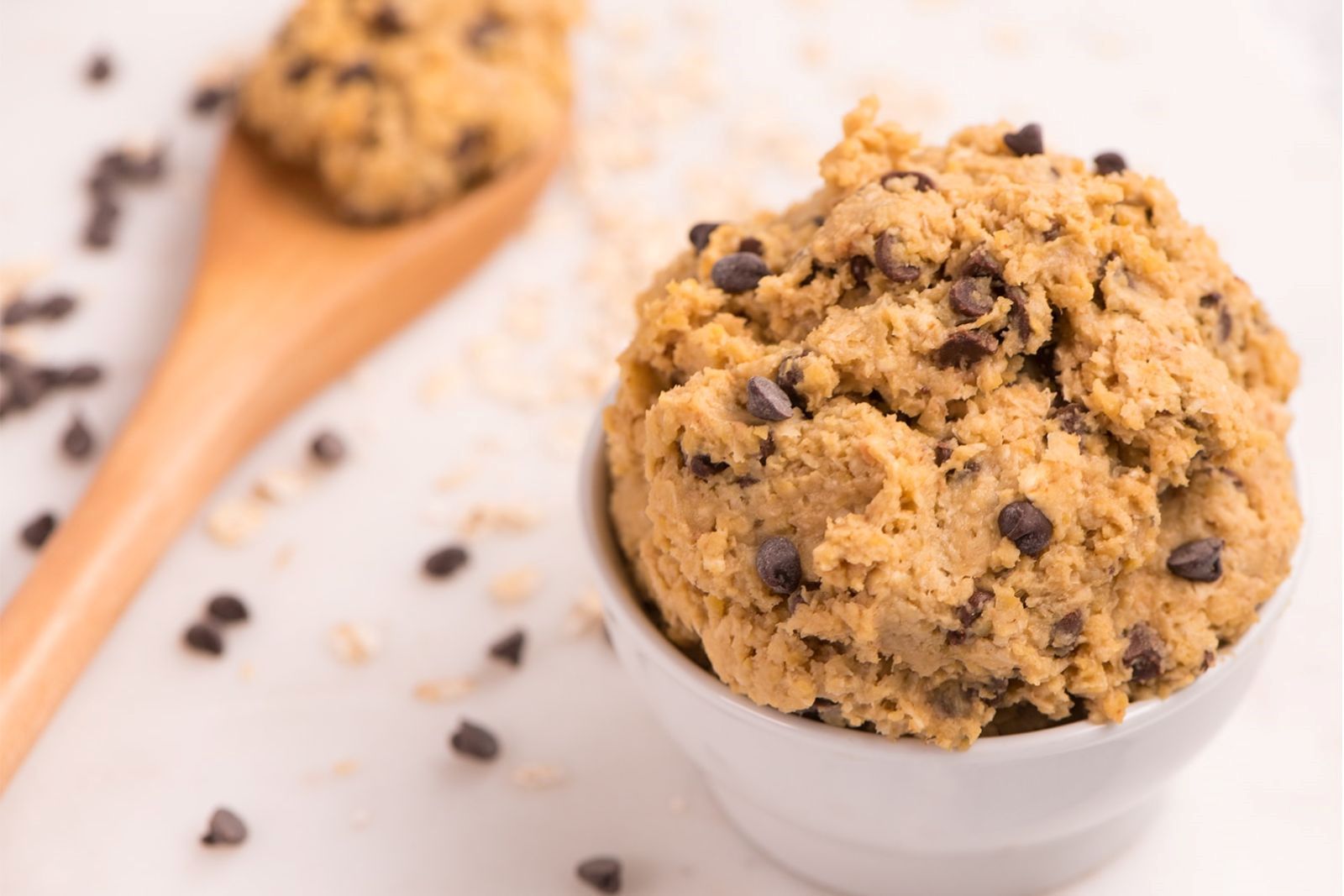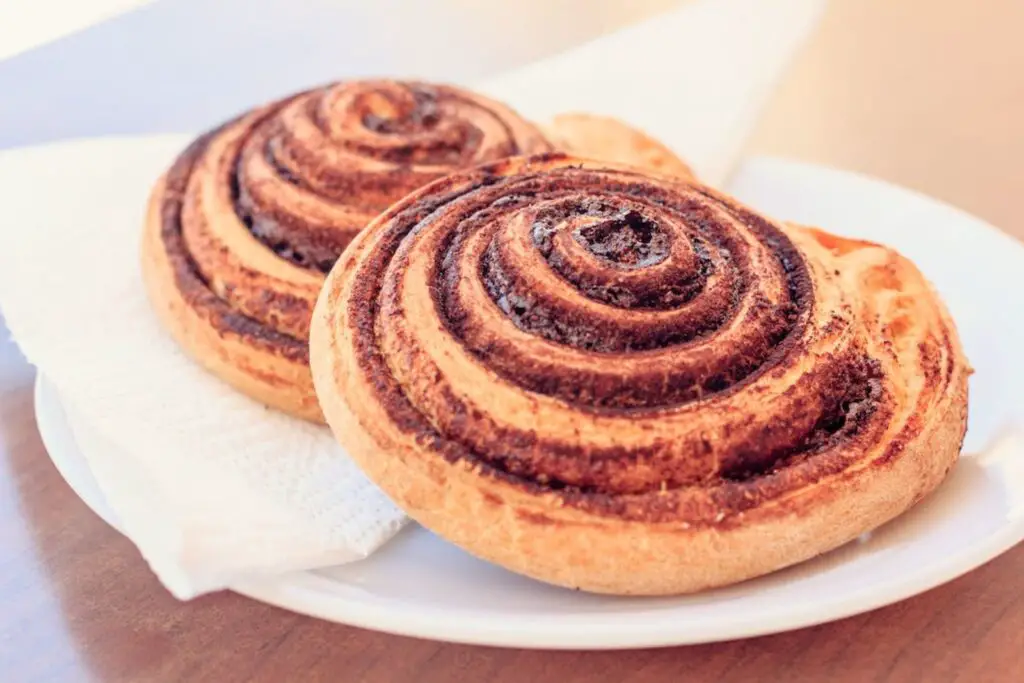
Oatmeal cookies are a classic treat loved by many. They are packed with hearty oats, chewy raisins, and a hint of warm cinnamon. Baking a fresh batch of oatmeal cookies is always a delight, but sometimes you may find yourself with more dough than you can bake in one go. Freezing oatmeal cookie dough allows you to have a ready-to-bake treat whenever you crave it. By following a few simple steps, you can freeze your oatmeal cookie dough and enjoy freshly baked cookies at any time. This article provides a comprehensive guide on freezing oatmeal cookie dough to ensure its perfect texture and flavor when it’s time to bake.
Here’s a guide on how to freeze oatmeal cookie dough:
Step 1: Prepare the oatmeal cookie dough
To begin the process of freezing oatmeal cookie dough, you’ll need to prepare your favorite oatmeal cookie dough recipe. This step is crucial as it sets the foundation for the texture and flavor of your cookies once they’re baked.
To make the dough, gather the necessary ingredients such as oats, flour, butter, sugar, eggs, and any additional ingredients you prefer, such as raisins or chocolate chips. The combination of these ingredients will create a delicious base for your oatmeal cookies.
Start by measuring the required amounts of oats, flour, butter, sugar, and eggs according to your recipe. It’s important to follow the recipe instructions to achieve the desired consistency and taste.
In a mixing bowl, add the measured oats, flour, butter (usually at room temperature), sugar, eggs, and any other ingredients specified in your recipe. The oats provide a hearty texture, while the flour acts as a binding agent. The butter adds richness and flavor, and the sugar sweetens the dough. Additional ingredients like raisins or chocolate chips can be added to enhance the flavor and texture of the cookies.
Using a spoon or an electric mixer, combine the ingredients until they are well incorporated. Make sure there are no dry pockets of flour or unblended ingredients. Mixing the dough thoroughly ensures that all the flavors are evenly distributed and that the cookies will bake consistently.
Depending on the recipe, you may need to mix the dough for a specific duration or until it reaches a certain texture. Follow your recipe’s instructions to determine the appropriate mixing time.
Once the ingredients are fully combined, your oatmeal cookie dough is ready to be shaped and frozen. Proceed to the next steps of the freezing process to ensure that your dough stays fresh and can be easily baked whenever you desire freshly baked oatmeal cookies.
Remember to enjoy some of the dough right away if you desire warm, freshly baked cookies, and save the rest for freezing. The beauty of freezing oatmeal cookie dough is that you can have homemade cookies whenever you want, without the need to prepare the dough from scratch each time.
Can I add oat milk to the dough recipe to enhance the oat flavor?
Yes, you can add oatmilk to the dough recipe to enhance the oat flavor. Adjust the amount of oat milk based on the consistency of the dough, making sure not to make it too wet. Experiment with different quantities to achieve the desired flavor and texture.
Step 2: Shape the dough into balls
After preparing your oatmeal cookie dough, the next step in freezing it is to shape the dough into balls. This step is essential for convenient portioning and even baking of your cookies.
To shape the dough, take portions of the dough in your hands and roll them between your palms to create small, evenly sized balls. The size of the balls will depend on your preference and the desired cookie size. Generally, aim for balls that are about 1 to 1.5 inches in diameter, as they will spread slightly when baked.
By shaping the dough into uniform balls, you ensure that the cookies bake evenly. Uniformly sized balls will have a consistent thickness, resulting in cookies that are evenly cooked throughout. Additionally, shaping the dough into balls helps to maintain a visually appealing and uniform shape for your cookies.
As you shape each ball, place it onto a baking sheet lined with parchment paper. The parchment paper prevents the dough from sticking to the baking sheet and makes it easier to remove the frozen dough balls later. Be sure to leave some space between each ball to allow for spreading during baking.
If you have a large amount of dough, you may need to use multiple baking sheets or work in batches. It’s important to arrange the dough balls in a single layer without overcrowding to ensure even freezing and prevent them from sticking together.
Can I freeze oatmeal cookie dough in individual cookie shapes?
Yes, you can freeze oatmeal cookie dough in individual cookie shapes. After shaping the dough into desired cookie shapes, pre-freeze them on a baking sheet, then transfer them to a freezer-safe container. This allows you to bake individual cookies directly from the freezer.
Can I freeze oatmeal cookie dough in larger batches?
Yes, you can freeze oatmeal cookie dough in larger batches. If you prefer to freeze a larger quantity, shape the dough into a block or several logs before pre-freezing. This allows you to cut off portions as needed for baking.
Step 3: Pre-freeze the dough balls
After shaping the oatmeal cookie dough into balls, the next crucial step is to pre-freeze the dough balls. Pre-freezing is essential to prevent the dough balls from sticking together during storage and to maintain their individual shape.
To pre-freeze the dough balls, carefully transfer the baking sheet with the dough balls to the freezer. Make sure the baking sheet is placed in a flat position to keep the dough balls from rolling or shifting during freezing.
Allow the dough balls to pre-freeze in the freezer for about 1-2 hours, or until they are firm to the touch. The exact duration may vary depending on your freezer’s temperature and the size of the dough balls.
During the pre-freezing process, the moisture in the dough begins to freeze, creating a protective barrier around each dough ball. This barrier helps to maintain the individual shape and prevent the dough balls from merging together into a single mass.
By pre-freezing the dough balls, you ensure that they retain their integrity when stored for an extended period. This step is especially crucial if you plan to freeze the dough balls for an extended period or if you want to remove a specific number of dough balls from the freezer at a time for baking.
Step 4: Transfer the dough balls to a freezer-safe container
Once the oatmeal cookie dough balls have been pre-frozen and are firm, it’s time to transfer them to a freezer-safe container or a resealable plastic bag. This step is crucial for proper storage and to maintain the quality of the dough balls while they are frozen.
Start by removing the baking sheet with the frozen dough balls from the freezer. Ensure that the dough balls are still firm and intact before proceeding with the transfer.
Choose a freezer-safe container or a resealable plastic bag that is specifically designed for freezer storage. These containers or bags are made of materials that can withstand low temperatures without becoming brittle or affecting the quality of the dough balls.
Carefully place the frozen dough balls into the container or bag, ensuring they are arranged in a single layer without overcrowding. If using a bag, it’s best to lay it flat and place the dough balls in a single layer to prevent them from sticking together.
If using a container, make sure to leave some space between the dough balls and the lid to account for any expansion that may occur during freezing.
If using a resealable plastic bag, remove as much air as possible from the bag before sealing it tightly. Excess air can cause freezer burn and affect the quality of the dough balls over time. One method to remove air from the bag is to gently press on it while sealing, starting from one end and working your way to the other, forcing the air out through the opening.
Sealing the container or bag tightly is essential to prevent moisture from entering and freezer odors from affecting the dough balls.
Step 5: Label and date the container
After transferring the oatmeal cookie dough balls to a freezer-safe container or bag, it is important to label and date the container. This step is essential for easy identification and to ensure that you use the oldest dough first, maintaining proper rotation of your frozen cookie dough.
Using a permanent marker, write the date of freezing and the contents of the container directly on a label or directly on the bag itself. Including the date allows you to keep track of how long the dough has been stored in the freezer, ensuring you use it within the recommended timeframe for best quality.
Additionally, labeling the container or bag with the contents is helpful if you have multiple types of cookie dough stored in the freezer. This way, you can easily identify the oatmeal cookie dough without the need to open each container or bag to check its contents.
By labeling and dating the container, you establish a system for proper organization and management of your frozen oatmeal cookie dough. This step ensures that you can locate and use the oldest dough first, preventing any dough from being stored for too long and potentially compromising its quality.
Remember to place the label in a visible and easily readable location on the container or bag. This way, you can quickly identify the dough without needing to search through multiple containers or bags.
Properly labeled and dated containers not only help with organization but also contribute to a more efficient and enjoyable baking experience. You’ll be able to keep track of your frozen oatmeal cookie dough inventory and enjoy fresh batches of cookies without any guesswork.
Step 6: Store in the freezer
After labeling and dating the container or bag of oatmeal cookie dough balls, the next step is to store them in the freezer. Proper freezer storage is crucial to maintain the quality and freshness of the dough for an extended period.
Carefully place the labeled container or bag of dough balls in the freezer. Ensure that they are positioned in an area where they won’t be crushed or damaged by other items in the freezer. It’s recommended to place them on a flat surface or a designated section of the freezer shelf.
Maintaining the dough at a consistently low temperature is vital for preserving its quality. The freezer should be set at 0°F (-18°C) or below to ensure that the dough remains frozen and safe to eat.
The oatmeal cookie dough can be stored in the freezer for up to 3 months. Beyond this timeframe, the dough may still be safe to consume, but its quality may deteriorate over time, resulting in changes to texture and flavor.
It’s important to note that while the dough can be frozen for up to 3 months, it is best to use it within the first month for optimal taste and texture. The longer the dough is stored, the greater the risk of freezer burn or loss of quality.
When retrieving dough from the freezer for baking, always ensure that you handle the rest of the frozen dough with care and promptly return the remaining dough to the freezer to maintain its frozen state.
Step 7: Thaw and bake the dough
When the time comes to indulge in freshly baked oatmeal cookies, it’s important to properly thaw and bake the frozen dough. Follow these steps to ensure your cookies turn out delicious and perfectly baked.
- Remove the desired number of oatmeal cookie dough balls from the freezer. Keep in mind the quantity you want to bake, as you can thaw and bake only what you need while leaving the rest of the dough safely stored in the freezer.
- Transfer the frozen dough balls to a plate or container and place them in the refrigerator. Let them thaw overnight or for approximately 8-12 hours. Thawing the dough in the refrigerator allows for a slow, controlled thawing process, preventing any potential bacterial growth and ensuring the dough retains its quality.
- Once the dough balls have thawed completely, preheat your oven according to your original oatmeal cookie recipe’s instructions. This usually involves preheating to a specific temperature, such as 350°F (175°C).
- Line a baking sheet with parchment paper or a silicone baking mat to prevent the cookies from sticking to the pan and for easy cleanup.
- Take each thawed dough ball and place it onto the prepared baking sheet, leaving enough space between them to allow for spreading during baking. The exact spacing will depend on the size and recommended spreading of your specific cookie recipe.
- Gently press down on each dough ball with the back of a spoon or your fingertips to slightly flatten them. This step helps shape the cookies and promotes even baking.
- Place the baking sheet with the dough balls into the preheated oven and bake them according to your original recipe’s instructions. This will typically involve baking for a specific duration, such as 10-12 minutes, or until the cookies are golden brown around the edges and set in the center.
- Keep a close eye on the cookies while they are baking, as baking times can vary depending on factors such as oven temperature accuracy and desired cookie texture (e.g., chewy or crispy). Adjust the baking time as needed to achieve your desired level of doneness.
- Once baked, remove the baking sheet from the oven and allow the cookies to cool on the sheet for a few minutes. Transfer them to a wire rack to cool completely, where they will continue to firm up.
- Finally, enjoy your freshly baked oatmeal cookies! Serve them warm with a glass of milk or let them cool completely before storing in an airtight container for future snacking.
Other related questions
Can I refreeze oatmeal cookie dough?
Refreezing oatmeal cookie dough is not recommended. Once the dough has been thawed, it is best to bake the cookies rather than refreeze the dough. Refreezing can affect the texture and quality of the dough, leading to undesirable results when baked.
How do I know if the oatmeal cookie dough has gone bad after being frozen?
To determine if oatmeal cookie dough has gone bad after being frozen, several signs can indicate spoilage. Look for an off smell, unusual texture, or signs of freezer burn such as dryness or ice crystals. If the dough shows any of these indicators, it is advisable to discard it to prevent any risk of foodborne illness or unsatisfactory results when baking.
Can I freeze oatmeal cookie dough with mix-ins like chocolate chips or nuts?
Yes, you can freeze oatmeal cookie dough with mix-ins. Follow the same steps for shaping and pre-freezing the dough balls. Just make sure the mix-ins are evenly distributed in the dough, and consider slightly adjusting the baking time when you later bake the cookies.
Is it safe to consume oatmeal cookie dough raw after it has been frozen?
Frozen oatmeal cookie dough should not be consumed raw. Freezing does not eliminate the risks associated with consuming raw dough, particularly if it contains eggs. It is always recommended to bake the dough before consuming to ensure food safety.
Can I partially bake oatmeal cookie dough before freezing?
Yes, you can partially bake oatmeal cookie dough before freezing. This method, known as “par-baking,” involves baking the dough for a shorter time than the recipe suggests. Then, freeze the partially baked cookies and finish baking them later for a quicker final bake.








